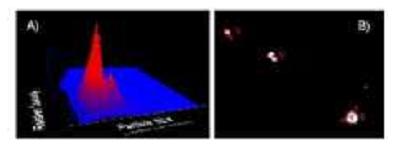RNA
Christina Troiber, Julia C. Kasper, Silvia Milani, Max Scheible, Irene Martin, Frank Schaubhut, Sarah Küchler, Joachim Rädler, Friedrich C. Simmel, Wolfgang Friess and Ernst Wagner (2012) Comparison of four different particle sizing methods for siRNA polyplex characterization, European Journal of Pharmaceutics and Biopharmaceutics, Available online 15 October 2012,
http://dx.doi.org/10.1016/j.ejpb.2012.08.014
Abstract
The ability to reliably determine the size of siRNA polyplexes is the key for the rational design of particles and their formulation, as well as, their safe application in vivo. At the moment, no standard technique for size measurements is available. Each method has different underlying principles and hence, may give different results. Here, four different analytical methods were evaluated for their suitability to analyze the characteristics of homogeneous and heterogeneous siRNA polyplexes: dynamic light scattering (DLS), atomic force microscopy (AFM), nanoparticle trafficking analysis (NTA) and fluorescence correlation spectroscopy (FCS).
Three different siRNA polyplex compositions generated with different, precise and hydrophobically modified oligoaminoamides were used in this study. All of the evaluated methods were suitable for analysis of medium sized, homogeneous siRNA polyplexes (∼ 120 nm). Small particles (< 40 nm) could not be tracked with NTA, but with the other three methods. Heterogeneous polyplexes were generally difficult to analyze. Only by visualization with AFM the heterogeneity of those polyplexes was observable. FCS was the only method suitable for measuring polyplex stability in 90% fetal bovine serum. Physicochemical characteristics of polyplexes are important quality criterions for successful in vivo application and future formulation development. Therefore, a comprehensive analysis by more than one method is of particular importance.

Fig:NTA of 332 polyplexes in HEPES pH 7.4: A) 3D polt of relative intensity versus particle size; B) Microscope pictures of tracked particles.